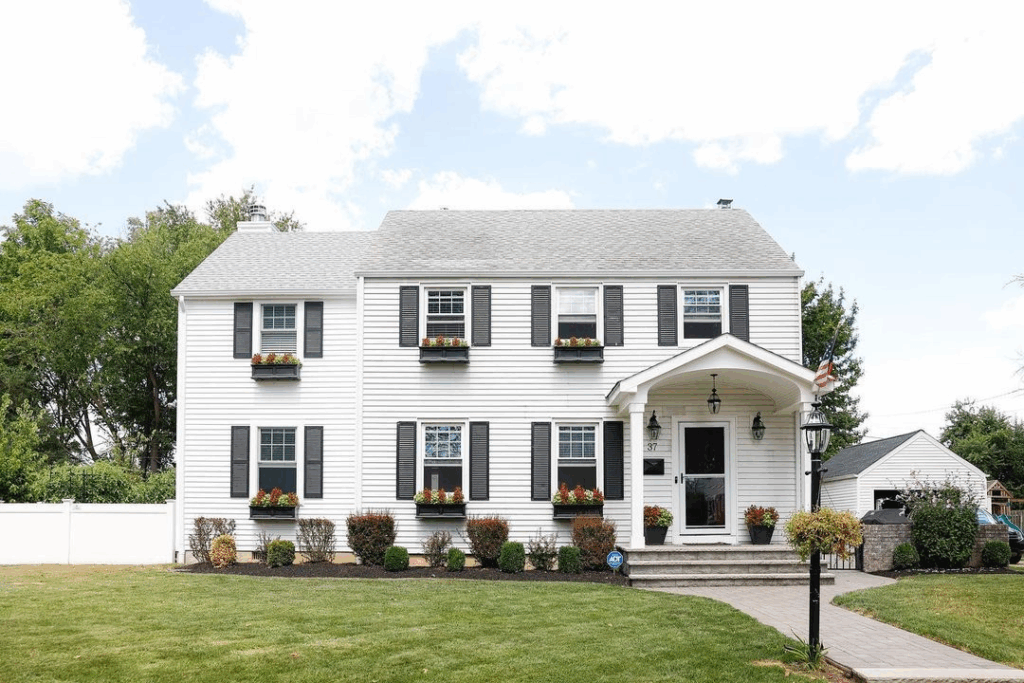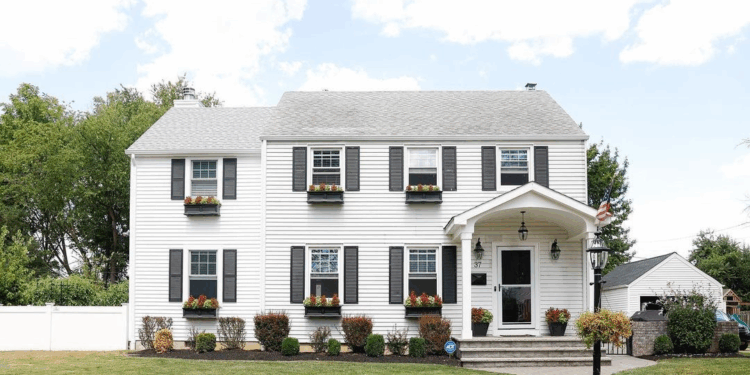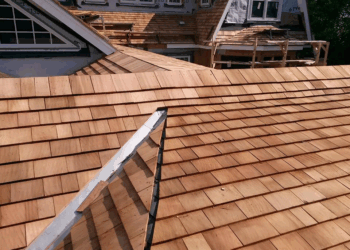
Step into the world of white siding exterior where elegance meets functionality. Discover the various types, design ideas, installation process, and maintenance tips that will transform your home’s exterior. Get ready to dive into the realm of white siding and unlock the secrets to enhancing your curb appeal.
Types of White Siding
When it comes to white siding options for exteriors, there are several materials to consider. Each type has its own set of pros and cons, as well as varying levels of durability and maintenance requirements.
Vinyl Siding
Vinyl siding is a popular choice due to its affordability and low maintenance. It is available in a wide range of styles and colors, including white. However, vinyl siding may crack or fade over time, and it is not as durable as some other materials.
Fiber Cement Siding
Fiber cement siding offers a more durable option compared to vinyl. It is resistant to rot, fire, and termites, making it a long-lasting choice for white siding. However, fiber cement siding can be more costly and heavier to install.
Wood Siding
Wood siding provides a classic and natural look to a home’s exterior. While white wood siding can be painted or stained to maintain its color, it requires regular maintenance to prevent rot and insect damage. It is also more susceptible to weathering compared to other materials.
Aluminum Siding
Aluminum siding is lightweight, durable, and resistant to fire and insects. It can be painted white and is relatively low maintenance. However, aluminum siding may dent easily and is prone to fading over time.
Engineered Wood Siding
Engineered wood siding combines wood fibers and resin to create a strong and durable material. It can be painted white and offers the look of real wood without as much maintenance. However, engineered wood siding may be susceptible to moisture damage if not properly installed and maintained.
Conclusion
Each type of white siding material has its own advantages and drawbacks. Consider factors such as cost, durability, maintenance, and aesthetic appeal when choosing the right white siding for your home’s exterior.
Design Ideas with White Siding
White siding is a versatile choice that can enhance the aesthetic appeal of any home exterior. Here are some design ideas to inspire you:
Modern Minimalist
- Pair white siding with black trim for a bold and contemporary look.
- Use clean lines and geometric shapes to create a sleek and minimalist facade.
- Incorporate large windows and a flat roof to emphasize the modern design.
Coastal Charm
- Combine white siding with blue accents for a classic coastal vibe.
- Add nautical elements like rope details or weathered wood for a seaside feel.
- Choose white shutters and a welcoming front porch to complete the coastal look.
Traditional Elegance
- Opt for white siding with traditional details like crown molding and columns.
- Add a pop of color with a vibrant front door or colorful flowers in the landscaping.
- Use white trim to highlight architectural features and create a timeless appeal.
Installation Process
Installing white siding on an exterior requires careful planning and precise execution. Let’s explore the steps involved, tools and materials needed, as well as common challenges and how to overcome them.
Preparation and Planning
Before starting the installation process, it is essential to measure the area where the white siding will be installed accurately. This will help determine the amount of siding needed for the project. Additionally, ensure that the surface is clean, smooth, and free of any debris or obstacles that could interfere with the installation process.
Tools and Materials
To successfully install white siding, you will need the following tools and materials:
- Vinyl or fiber cement siding panels
- Siding nails or screws
- Siding trim pieces
- J-channel and utility trim
- Siding cutter or saw
- Level and measuring tape
- Hammer or nail gun
- Caulk and sealant
- Protective gear such as gloves and safety glasses
Installation Process
- Start by installing the starter strip at the bottom of the exterior wall, ensuring it is level.
- Begin attaching the siding panels, overlapping each one slightly to prevent water infiltration.
- Use the J-channel and utility trim around windows, doors, and corners for a clean finish.
- Trim the siding panels as needed to fit the dimensions of the wall, using a siding cutter or saw.
- Secure the siding panels in place with nails or screws, making sure they are evenly spaced and level.
- Apply caulk and sealant around the edges and seams to prevent moisture from seeping behind the siding.
- Finish the installation by adding the trim pieces for a polished look.
Common Challenges and Solutions
- Warped or bowed siding panels: To prevent this issue, store the siding panels flat before installation and ensure they are properly secured in place.
- Uneven installation: Use a level and measuring tape throughout the installation process to ensure the siding is straight and level.
- Misalignment of panels: Double-check measurements and make adjustments as needed to ensure a seamless appearance.
- Moisture damage: Properly seal edges and seams with caulk and sealant to prevent water infiltration behind the siding.
Maintenance and Care
Proper maintenance is essential to ensure that your white siding remains in top condition and looks pristine. Regular care can help prevent issues like discoloration or mold growth, keeping your home exterior looking fresh and clean.
Cleaning White Siding
One of the most important aspects of maintaining white siding is cleaning it regularly. Here are some tips on how to effectively clean white siding without damaging the material:
- Use a mixture of mild soap and water to scrub the siding gently. Avoid harsh chemicals that can cause discoloration.
- Rinse the siding thoroughly with a garden hose to remove all soap residue.
- Consider using a pressure washer on a low setting for tough stains, but be cautious not to use too much pressure, which can damage the siding.
- For mold or mildew growth, use a solution of water and white vinegar to clean the affected areas.
- Regularly inspect the siding for any signs of damage or issues that may require professional attention.
Preventing Discoloration and Mold Growth
To prevent discoloration or mold growth on white siding, there are some preventive measures you can take:
- Trim any trees or bushes near the siding to prevent mold growth due to moisture retention.
- Ensure proper ventilation around the siding to prevent condensation buildup, which can lead to mold growth.
- Inspect the caulking and seals around windows and doors to prevent water intrusion that can cause discoloration or mold.
- Regularly clean gutters and downspouts to prevent water from overflowing and causing damage to the siding.
Concluding Remarks
As we conclude this journey through the realm of white siding exterior, remember that the key to a stunning exterior lies in the details. By choosing the right type, implementing creative design ideas, mastering the installation process, and following proper maintenance practices, you can elevate the look of your home with ease.
Embrace the versatility and timeless beauty of white siding to create a lasting impression on all who pass by.
FAQ Summary
What are the different types of white siding available?
There are options like vinyl, fiber cement, and wood white siding.
How do I maintain white siding to keep it looking pristine?
Regularly clean it with a mild detergent and water solution, and inspect for any damage.
Can white siding be installed on any type of architectural style?
Yes, white siding can complement various architectural styles from traditional to modern.














